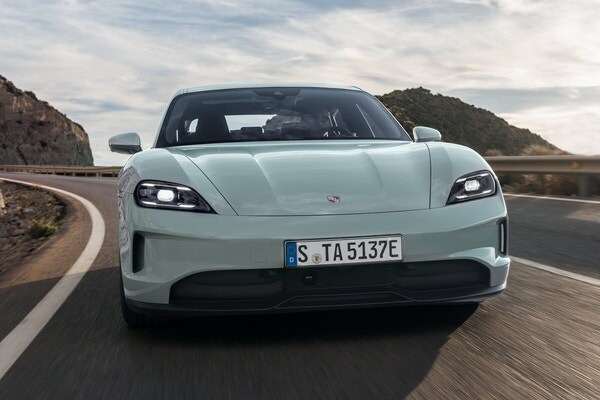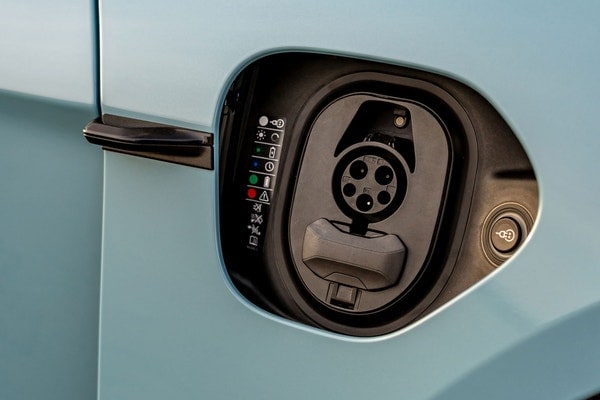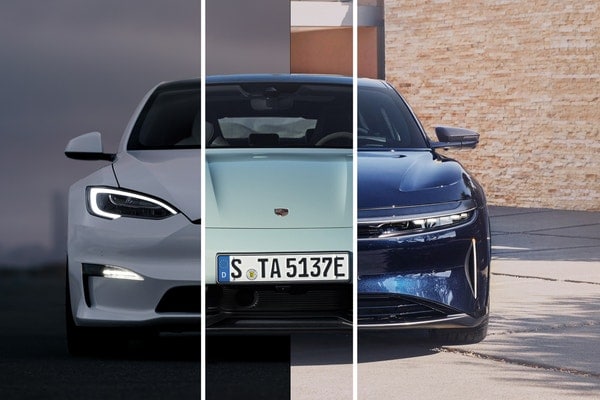Used 2011 Porsche 911 Turbo S Coupe Review
Consumer reviews
Read what other owners think about the 2011 Porsche 911 Turbo S Coupe.
Most helpful consumer reviews
2011 911 turbo S
Edmunds Summary Review of the 2011 Porsche 911 Turbo S Coupe
Pros & Cons
- Pro:Multiple models
- Pro:precise steering
- Pro:effortless acceleration
- Pro:powerful brakes
- Pro:all-wheel-drive option
- Pro:spacious cockpit
- Pro:surprisingly fuel-efficient
- Pro:highly customizable.
- Con:Option prices add up quickly.
Full Edmunds Review: 2011 Porsche 911 Coupe
What’s new
The parade of new or returning Porsche 911 models continues for 2011 with the introduction of the new GTS, Turbo S, GT2 RS, GT3 RS and limited-edition GT3 RS 4.0 and Speedster models. Also for 2011, the 911 Carrera, Targa and Turbo models offer Bluetooth and an iPod/USB audio interface as standard. New option packages available on the more mainstream models provide some cost savings.
Edmunds says
The 2011 Porsche 911 remains the quintessential sports car that only gets better with every passing year.
Vehicle overview
Saying "I want a 2011 Porsche 911" is like going to the Cheesecake Factory and telling the waitress, "I'll have the food, please." You'll need to be more descriptive to discern which of the 19 models -- differentiated by body style, engine, driven wheels and performance tuning -- will suit you. There's also an options list that challenges the federal budget in length, including match-to-sample paint and leather colors. To quote another restaurant chain, you can have it your way.
But do you even want one in the first place? Buying such a pricey automotive toy is seldom a rational affair, but as much as the 911 is a lust-worthy item (regardless of the particular variant you may choose), it also makes a lot of sense. A Carrera S will hit 60 mph in 4.2 seconds, yet also return 27 mpg. It'll humble just about any mountain road, but also take you in comfort from Phoenix to Vegas with a golf bag and a weekend's worth of luggage. The Porsche 911 has also been around so long in its most basic form that its engineers have simply been perfecting perfection.
If this seems like we're blowing smoke up the 911's engine-filled bum, you'd be right. But what other choice do we have when every single one of its 19 variations is so darned good?
Frankly, we'd be happy with a plain, old base-model 911 Carrera, which gives up very little to its siblings with longer names. But when the 911 Turbo became capable of reaching 60 mph in a shocking 3.2 seconds, we were absolutely smitten. Now for 2011, an even more powerful Turbo S model has arrived along with several models intended for more dedicated drivers or even track use. The GT2 RS in particular is one of the wildest and demanding cars on the road, adding power to the Turbo S engine while subtracting the security of all-wheel drive.
Despite our adoration for the many shades of Porsche 911, there are, of course, several competitors targeting its myriad models. We can't exactly argue against a list that includes the 2011 Aston Martin V8 Vantage, 2011 Audi R8, 2011 Jaguar XK, 2011 Lotus Evora, Maserati GranTurismo, Mercedes-Benz SLS AMG and 2011 Nissan GT-R. But for those seeking purity, simplicity, practicality and, yes, variety, the 911 will always prevail.
2011 Porsche 911 models
The 2011 Porsche 911 is available in 19 different variations. The Carrera and Turbo models are available in coupe and convertible (Cabriolet) body styles, while the Targa model is essentially a hatchback coupe with a large sunroof and rear hatch made from glass. All-wheel drive and larger rear fenders are added to the Turbo models and any 911 with "4" in its name. The bigger rear fenders are also found on the GTS and Speedster. The GT3, GT3 RS, GT3 RS 4.0 and GT2 RS are coupe only, while the 911 Speedster is convertible only.
The Carrera and Targa trims come standard with 18-inch wheels, performance tires, bi-xenon headlights, LED running lights, automatic wipers, a steel sunroof, cruise control, automatic climate control, leather upholstery, power-reclining front seats (with manual fore-aft and height adjustment), split-folding rear seats and a tilt-and-telescoping steering wheel. Also standard is a touchscreen electronics interface, Bluetooth and a nine-speaker stereo with CD/DVD player, an auxiliary audio jack and an iPod/USB audio interface.
The Cabriolet includes a power soft top, while the Targa includes a bigger, more complex sunroof and a rear hatch, both made from glass. The S trims add a more powerful engine, 19-inch wheels, an adaptive suspension and a smaller-diameter steering wheel. The GTS gets more power, special wheels and unique design flourishes for the exterior, plus faux-suede trim for the seats, shift lever and steering wheel. The 911 Speedster is essentially a Carrera S Cabriolet with almost all of the available options, plus more power and special exterior and interior trim.
The Turbo adds to the Carrera a turbocharged engine, 19-inch forged wheels, a more aggressive suspension tune, unique body styling, full power front seats, a full leather interior, auto-dimming interior and driver-side mirrors and a 13-speaker Bose surround-sound system. The Turbo S adds more power, an automated manual transmission, carbon-ceramic brakes, adaptive sport seats and the availability of special two-tone interior color schemes.
Besides engine and body style attributes, most extra features available on upper trims are optional on lower trims. The rest of the options list is enormous, featuring an endless number of customizable features that will let you paint the exterior any color or wrap just about anything in leather. Regular options include different wheels, a limited-slip differential, adaptive headlights, shift paddles for the PDK automated manual transmission (standard on Turbo), a sport exhaust, parking sensors, sport seats (in three different designs), heated seats, ventilated seats, a heated steering wheel, different steering wheel designs, a navigation system, a six-CD/DVD changer, voice controls and satellite radio.
The ultra-high-performance 911 variations delete the rear jump seats. The GT3 gets 19-inch center-lock wheels, a limited-slip differential, enhanced suspension and brakes, a unique body kit, full underbody paneling, manual-adjustable sport seats and faux-suede trim for the seats, steering wheel and shifter. Certain luxury and convenience features like Bluetooth and the iPod/USB audio interface revert back to the options list, while the sound system is a downgraded four-speaker unit. The GT3 RS gets more horsepower, even more aggressive suspension tuning, a plastic rear window (for weight reduction), a fixed carbon-fiber rear wing and unique bodywork flourishes.
The top-of-the-line GT2 RS essentially takes the GT3 RS and adds a more powerful version of the Turbo's engine -- albeit with rear-wheel drive. Also included are carbon-ceramic brakes, a more aggressive aero package, carbon-fiber body panels and styling flourishes. The GT3 RS 4.0 is similar, but gets a bigger engine.
The GT2 and both examples of the GT3 can be equipped with many of the regular 911's optional items, but not all. The optional upgraded stereo for these cars is the Carrera's base nine-speaker system, and there are a number of further performance upgrades available as well.




Performance & mpg
Every 2011 Porsche 911 is powered by a horizontally opposed six-cylinder engine. A six-speed manual transmission is standard on most models, while a seven-speed dual-clutch automated manual known as PDK is standard on the Turbo S and Speedster and optional on all but GT3 models. All-wheel drive is included on the Turbo, Turbo S and any model with 4 in its name.
The Carrera and Targa get a 3.6-liter unit with 345 horsepower and 288 pound-feet of torque. The S models get a 3.8-liter unit with 385 hp and 310 lb-ft of torque. This engine gets bumped up to 408 hp in the Carrera GTS and Speedster or when equipped with the Carrera S Powerkit. Expect these 911s to go from zero to 60 mph in about 4.5 seconds or less.
The Turbo has a twin-turbocharged version of the Carrera S engine that produces 500 hp and 480 lb-ft of torque. An overboost function cranks that up to 516 lb-ft. In Edmunds performance testing with a PDK-equipped car, this engine was enough to hit 60 in a staggering 3.2 seconds -- quicker than just about everything not called Bugatti Veyron. The Turbo S should be even quicker, with 530 hp, 516 lb-ft of torque and standard PDK.
The GT3 reverts to a naturally aspirated 3.8-liter good for 435 hp and 317 lb-ft of torque. As in all the high-performance GT 911s, a six-speed manual is mandatory. In performance testing, it hit 60 mph in 4 seconds flat. The GT3 RS gets a bump up to 450 hp, while the GT3 RS 4.0 gets a 4.0-liter flat-6 that produces 500 hp and 339 lb-ft of torque.
Finally, the GT2 RS gets a version of the Turbo S engine, but with a whopping 620 hp. Given that it only has the rear wheels for traction and the manual standard, expect it to be about equal to the Turbo in a straight line.
Safety
Every 2011 Porsche 911 comes with antilock ventilated disc brakes, stability control and front, side and side curtain airbags. In Edmunds brake testing, the Carrera 4 and the Turbo came to a stop from 60 mph in 104 feet. The GT3 stopped in 99 feet. Given this excellent performance, you'd only need the available ceramic composite brakes if you frequent high-performance driving events.
Driving
For a car with an exaggerated rear weight bias, it's always impressive how beautifully composed this classically designed Porsche remains in corners. While 911s of yore earned a reputation for tricky at-the-limit handling, with the exception of the hard-core GT2 RS, those demons have long been exorcised -- especially when you get an AWD model. The 2011 Porsche 911 is all about composure and man-machine communication (that goes double for the phenomenal GT3), and it has a lightweight finesse to it that no bruising Nissan GT-R can match.
The PDK transmission is a welcome happy medium for those who desire the traffic-friendly nature of not having a clutch, yet still want the rapid shift performance of a traditional manual. However, we're not fans of the awkward standard shift buttons found on all but the Turbo. That gets more intuitive shift paddles, which are at least optional on the other trims.
Interior
Build quality is exceptional in the 2011 Porsche 911. Even those surfaces not swathed in soft hide are made with material that's pretty consistent with the cow-sourced stuff. Other material highlights include a standard Alcantara headliner and deep carpet that extends up onto the doors, eliminating the possibility of scuffing any sort of lower door plastic.
As far as interior space goes, it doesn't get much better in the sports car realm. Sure, the 2+2 rear seats are mostly useless, but when folded, they provide a large cargo space that complements the frunk (front trunk). Up front, the supportive bucket seats do a great job of holding both driver and passenger in place while cornering.
Roomy footwells and a tilt-and-telescoping steering wheel mean the 911 can accommodate drivers of nearly all sizes. Interior controls are relatively simple to operate, and items like navigation, Bluetooth, the iPod interface and ventilated seats help make this sports car a viable daily driver.
Edmunds Insurance Estimator
The Edmunds TCO® estimated monthly insurance payment for a 2011 Porsche 911 in Ohio is:
not availableRelated Used 2011 Porsche 911 Turbo S Coupe info
Recent automotive news
- Does Tesla's Future Include a $25K Car, Robotaxi or Both?
- Refreshed 2025 GMC Yukon Gets Massive Infotainment Screen
- 2025 Porsche Taycan Turbo GT First Drive: The Ludicrous Taycan
- Chevy Colorado vs. Ford Ranger vs. Toyota Tacoma: All New, But Which Is Best?
- The All-Electric 2025 Mercedes-Benz G-Wagen Is an Off-Road Game-Changer
- The Lamborghini Huracán STJ Is a Bittersweet Farewell
- Jeep Wrangler Meets the Steel Bender at Easter Jeep Safari
- Acura ADX Will Join the Brand Lineup as a Premium Compact Crossover
- Toyota 4Runner vs. Land Cruiser: Which SUV Is Right for You?
- The 2025 Corvette ZR1 Is Coming: Here's What We Know
Popular new car reviews and ratings
- Volvo Volvo XC40
- Mercedes Metris
- Toyota Tundra
- Ford 450
- Toyota Corolla Hybrid
- Audi RS6 6
- Mclaren 720 S Spider
- Volvo V60
- GMC Sierra LTD
- GT Shelby 500
Lease deals by make
- Audi Lease Deals
- Honda Lease Deals
- Chevrolet Lease Deals
- Ford Lease Deals
- BMW Lease Deals
- Buick Lease Deals
- GMC Lease Deals
- Genesis Lease Deals
- Cadillac Lease Deals
- Hyundai Lease Deals